|
Alternative positions for the laboring woman may
prevent some cases of dysfunctional labor (stalled labor or ineffective
contractions) while facilitating the birth process.
Changing positions during labor and birth is
considered by many professionals to reduce maternal distress, elicit more
effective contractions and maintain labor progress for many women. Fewer
medical interventions may be required, and positive outcomes for mother and
baby may be achieved.
First Stage – Dilation and Effacement
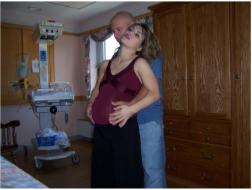
Walking, leaning against a wall or her partner in a slow dance
swaying movement, may help stimulate contractions while enlisting
gravity to bring the fetus down.
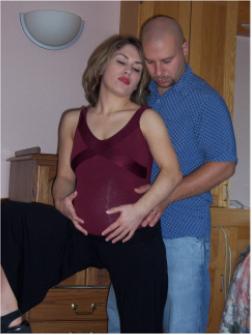
Asymmetrical kneeling or standing as in a lunge may assist in
fetal rotation, and provide relief from backache. (The woman kneels or
stands with one knee and hip flexed above the other.)
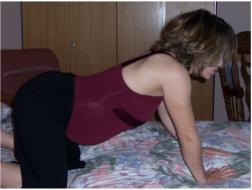
Kneeling on all fours, over a chair, or birth ball while swaying
the hips side to side can relieve back pain and help rotate the fetus
from occiput posterior to occiput anterior.
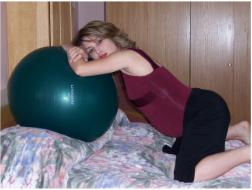
Standing beside the bed and leaning over a birth ball placed on
the bed may assist fetal alignment with the pelvis. These positions
have the potential to resolve some fetal heart rate problems by
relieving cord compression.
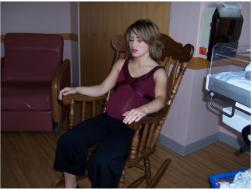
Sitting and swaying while bouncing on the birth ball, or sitting
in a rocking chair, or glider, allows the laboring woman the
opportunity to rest while continuing to engage gravity in order to
assist the baby’s descent. Fetal heart rate can easily be monitored
while she is in these positions.

Sitting backwards on a chair will enlarge the pelvis, engage
gravity and provide rest for the woman in labor.
References
The Labor
Progress Handbook, Penny Simkin and Ruth Ancheta, Blackwell Science
Inc., Malden, Mass, 2000
Episiotomy
and the Second Stage of Labor, Sheila Kitzinger and Penny Simkin, Penny
Press Publications, Yakima, WA, 1984
Family-Centered
Maternity and Newborn Care, A Basic Text, 4th Ed., Celeste R. Phillips,
Mosby, St. Louis, MO, 1996
This section provided by:
Andrea J. Branagan, MA, CD, ICCE,
CNMI
Director of Education, “Gentle
Birth Choices”
Childbirth Educator “Choice’s
West”
Last revised
9/2008
|
Second Stage – The Birth
Spontaneous bearing down and gravity enhancing
positions during the second stage are believed by many to decrease fetal
hypoxia and acidosis as well as maternal hypotension and too rapid
distention of the vaginal tissues, leading to lacerations or the need for
episiotomy. Since the second stage of labor may take up to several hours, it
can be advantageous for the laboring woman to continue to move in between
contractions. Any of the positions described earlier in this section can be
used. If forceps, vacuum extraction or episiotomy is required, the
lithotomy or supine position may be necessary.
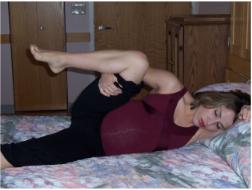
For the actual birth of the baby the laboring woman may be
encouraged to assume a side-lying position. She can hold her
upper leg or she may use the leg support that is part of her bed.
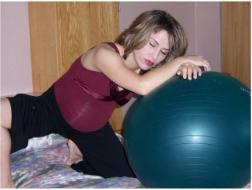
The back of the bed can be placed in an up-right position. The
laboring woman would kneel in the bed while draping herself over the
up right back of the bed.
The bed may be broken to assist the woman
to squat at the end of the bed while using the squat bar (if
available).
The importance of varying maternal position during
the first and second stage of labor does not diminish with the use of
epidural anesthesia. Move or roll the woman from side to side. This will
require time and effort as it should be done every ten to fifteen minutes,
as it is felt that with each movement (position change) there is decreased
risk of difficult labor. For the birth, the side lying position has been
found to provide good results.
|